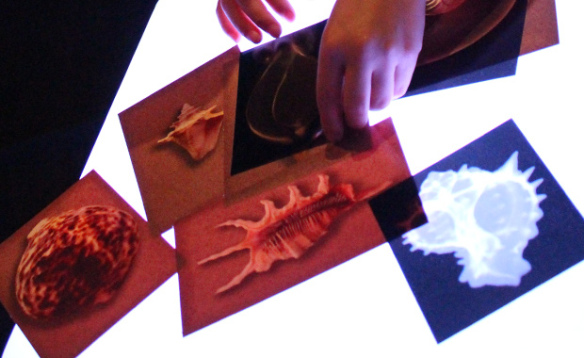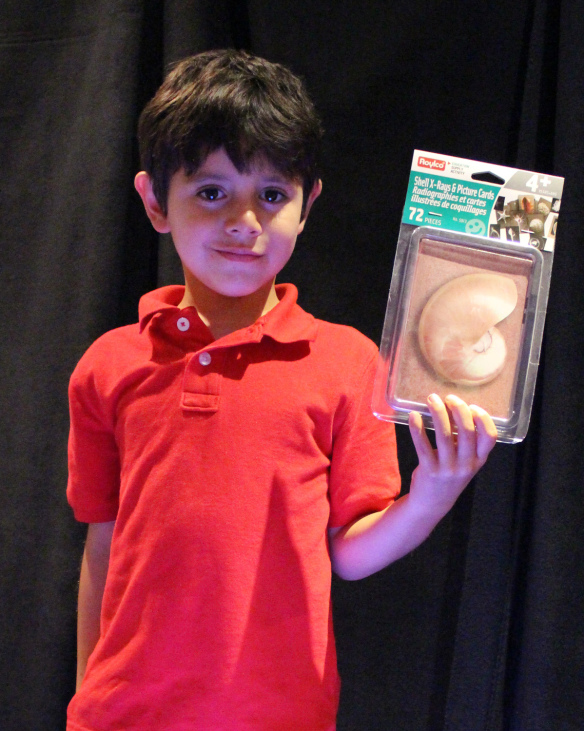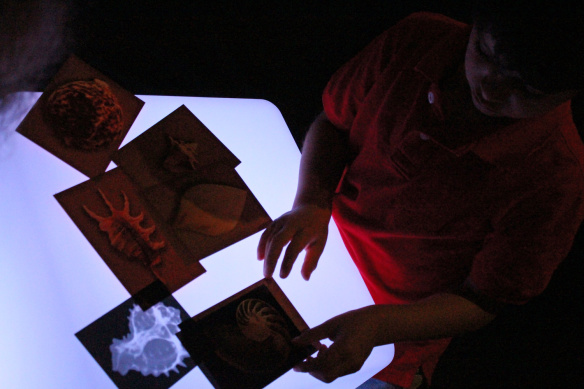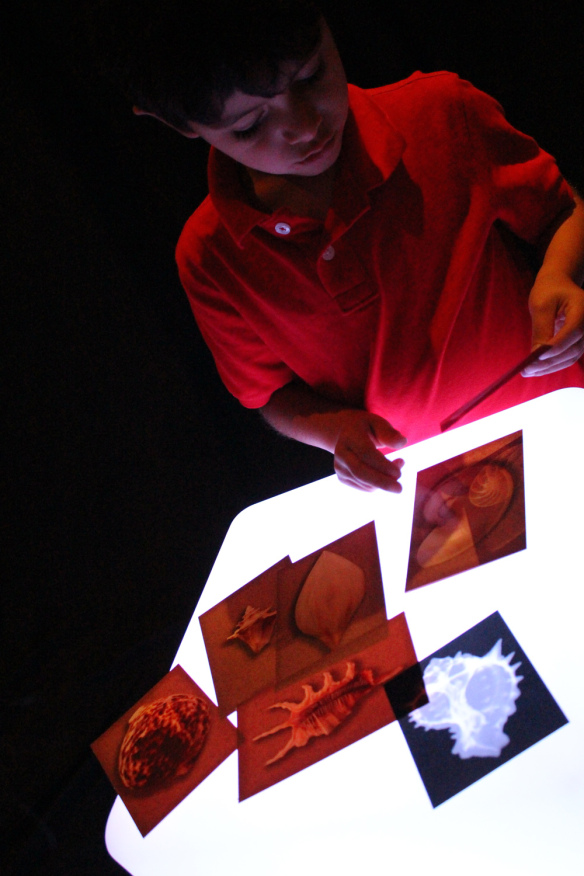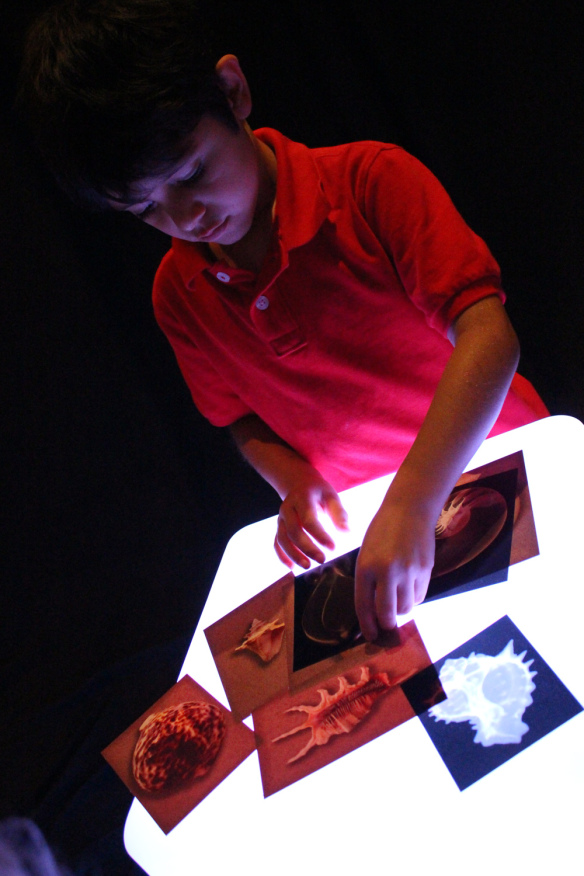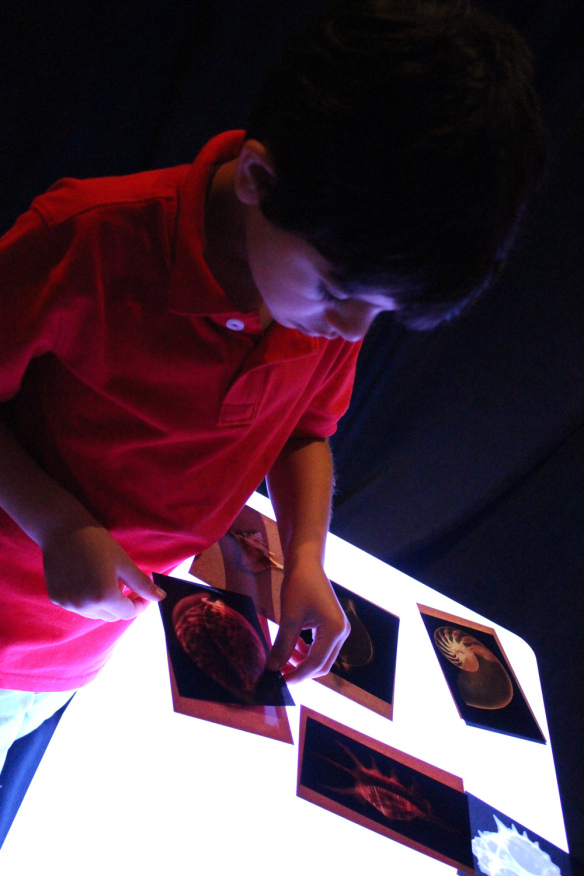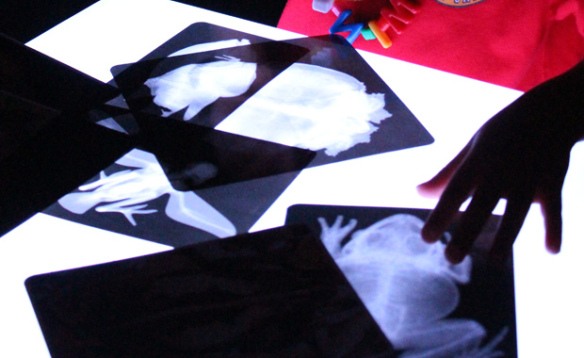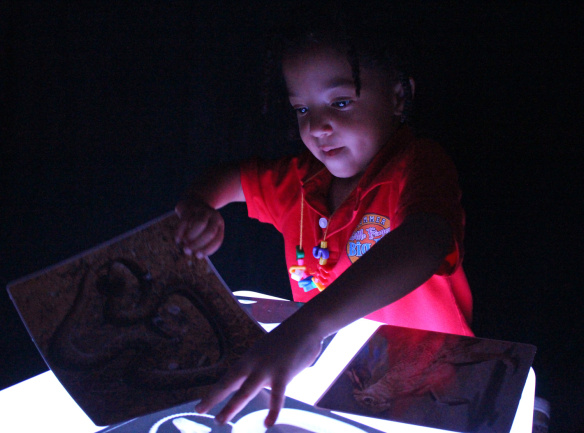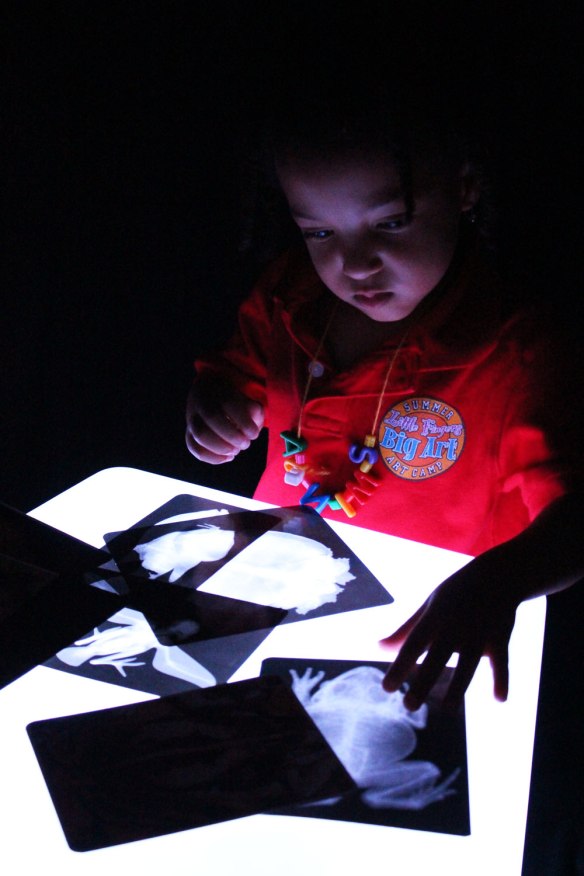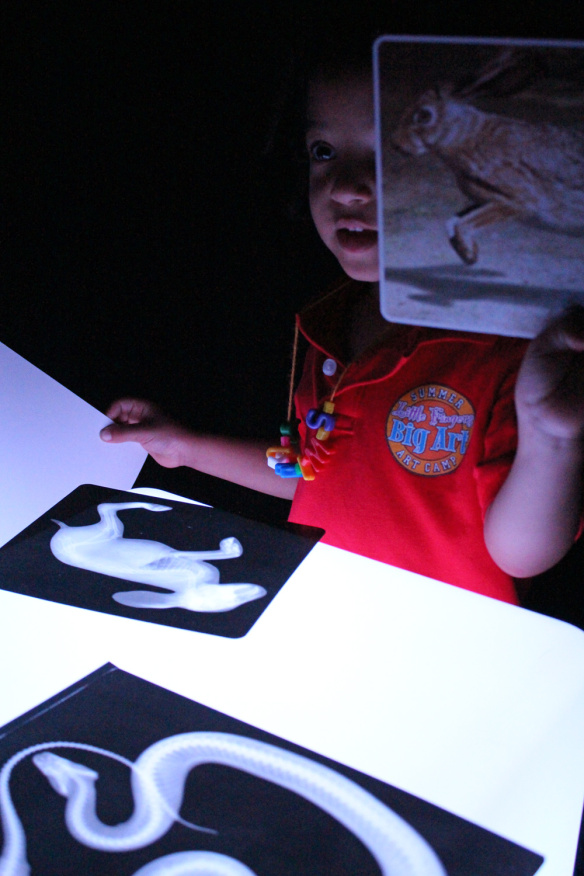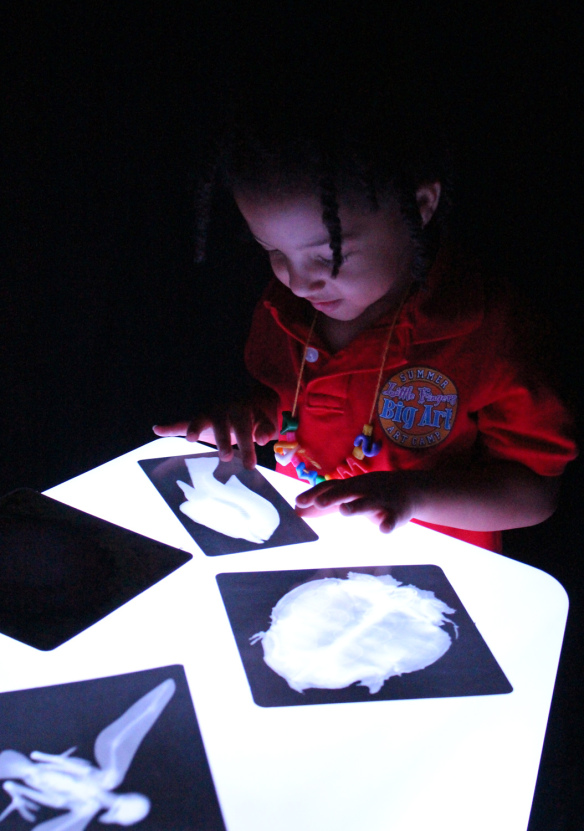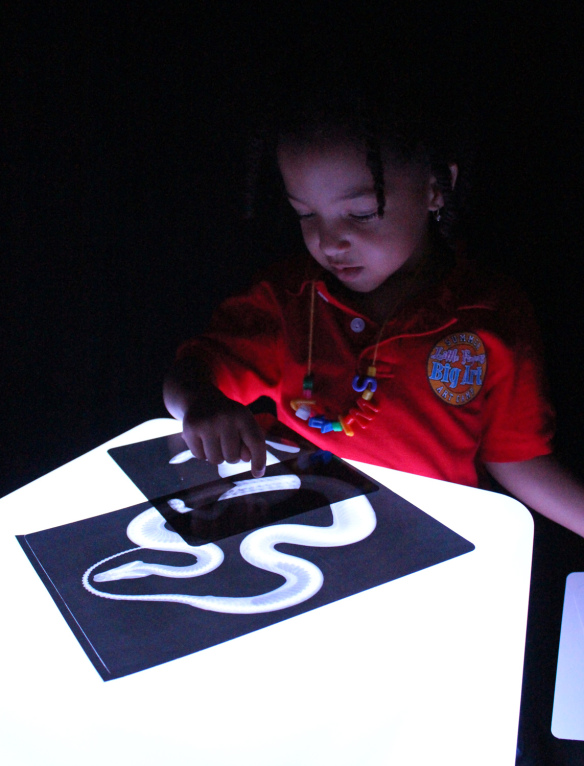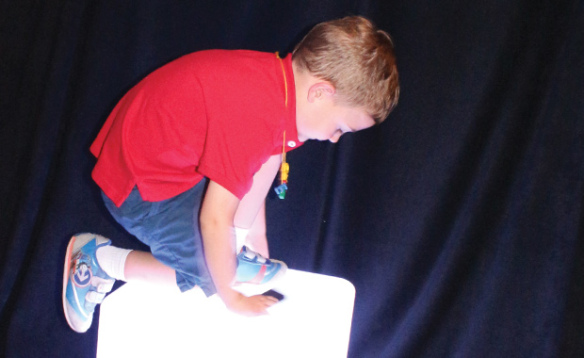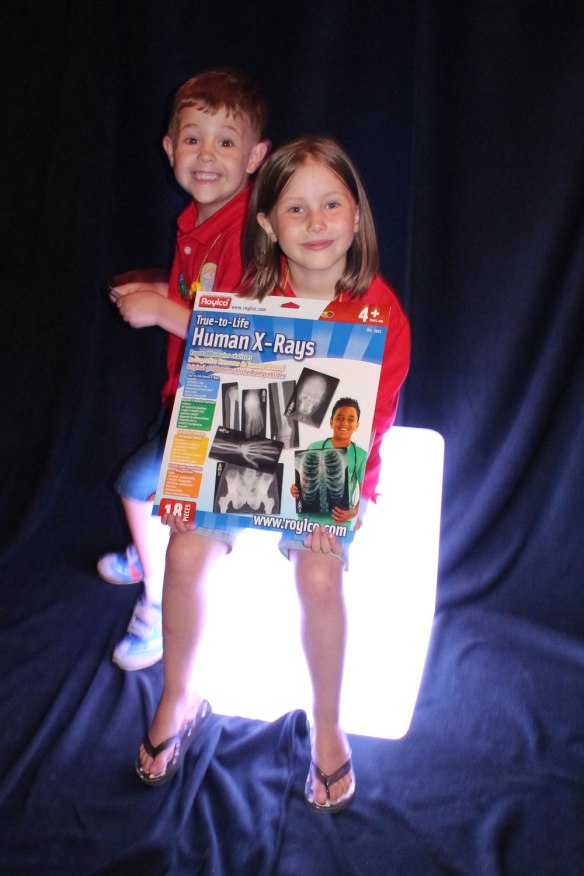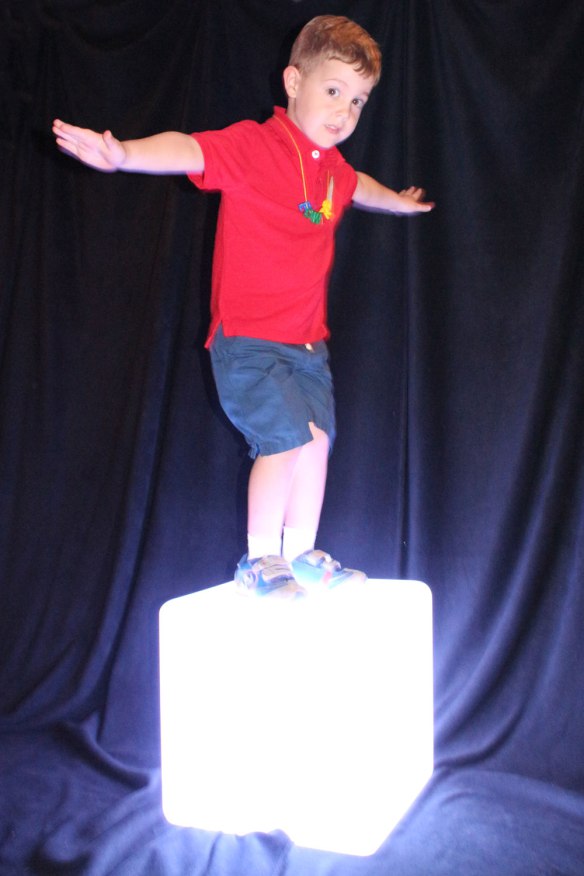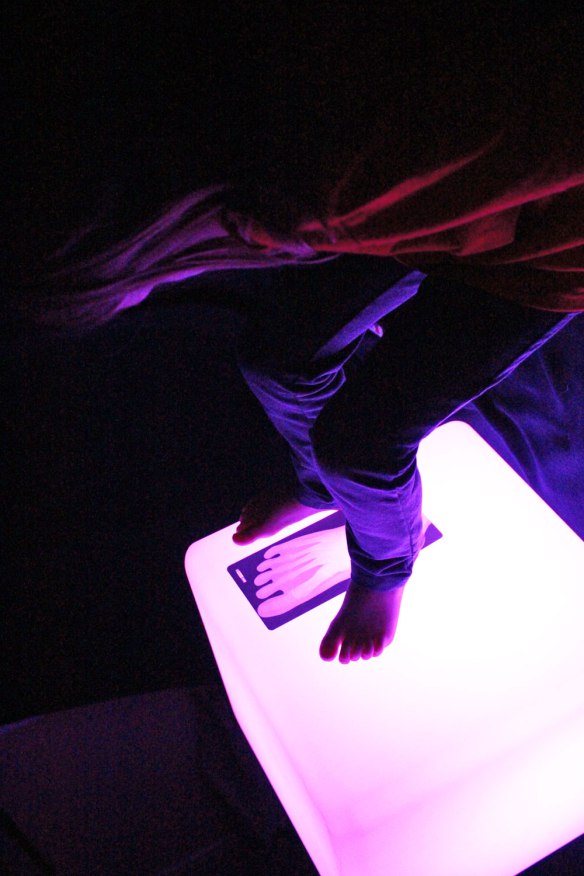Observe transparencies of x-rays to see cool images! Our R5913 Shell X-Rays & Picture Cards work great with the Educational Light Cube.
The Shell X-Rays and Picture Cards give you two cards per shell. One is an x-ray to see the inner details of each shell while the other is a picture card to show the shell in reality. This kit presents great value as it does not solely have to be used with a light table… although it works well with our Light Cube!
John placed the cards onto the table to see how the insides of the shells look like.
It was a nice exercise to compare and contrast the picture cards with their matching x-rays. We asked John to find the matching pairs, which was a good exercise in making connections with visual cues.
Does that one fit? John used the guide provided with the picture cards to learn more about the type of shell in each card.
There are 36 cards and x-rays in total and a detailed guide with information about each of the shells. It’s a great resource for enriching your science lessons!
Like us on Facebook, Share this post with your friends, or Subscribe to this blog today to receive original craft project updates every Monday, Wednesday and Thursday!

